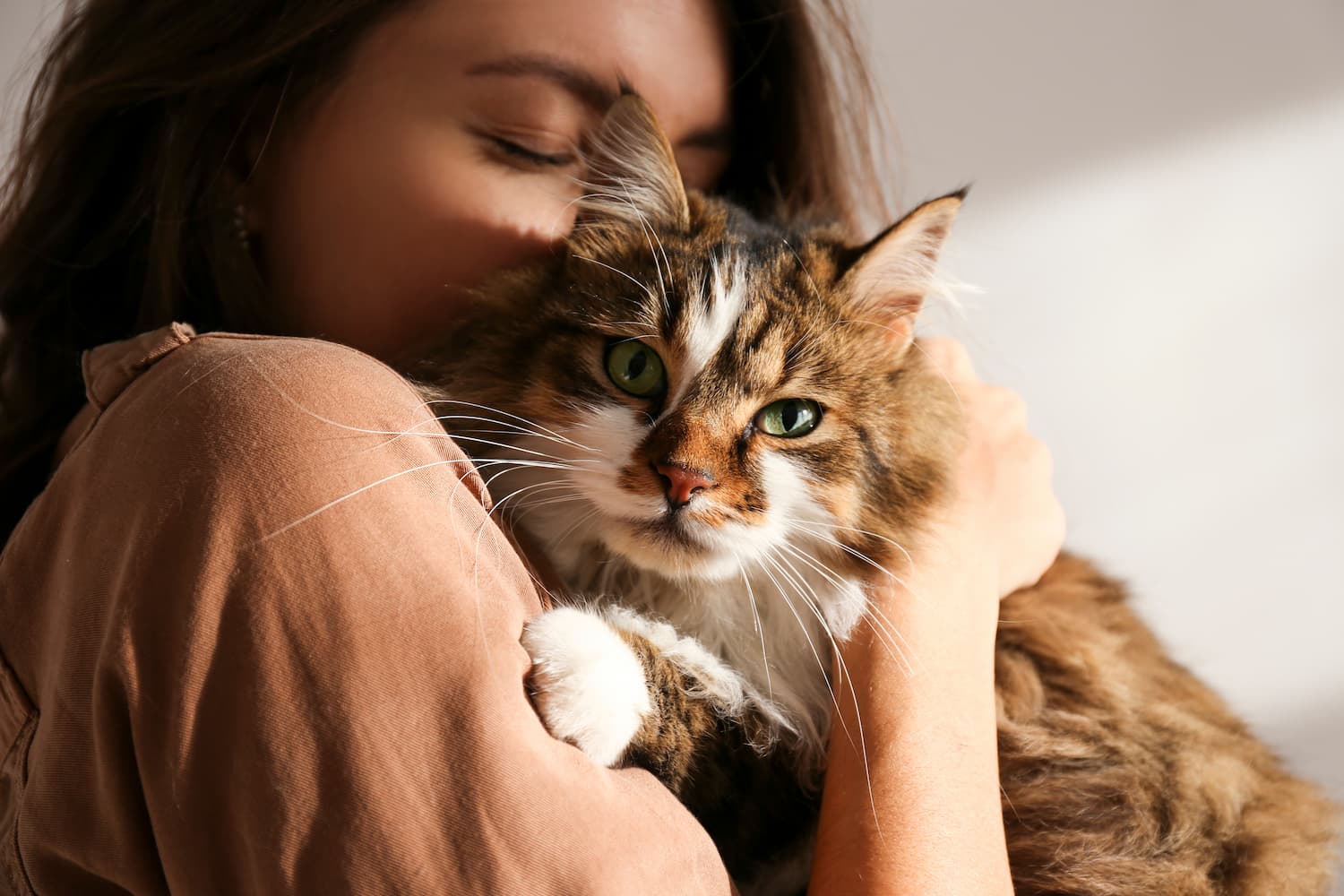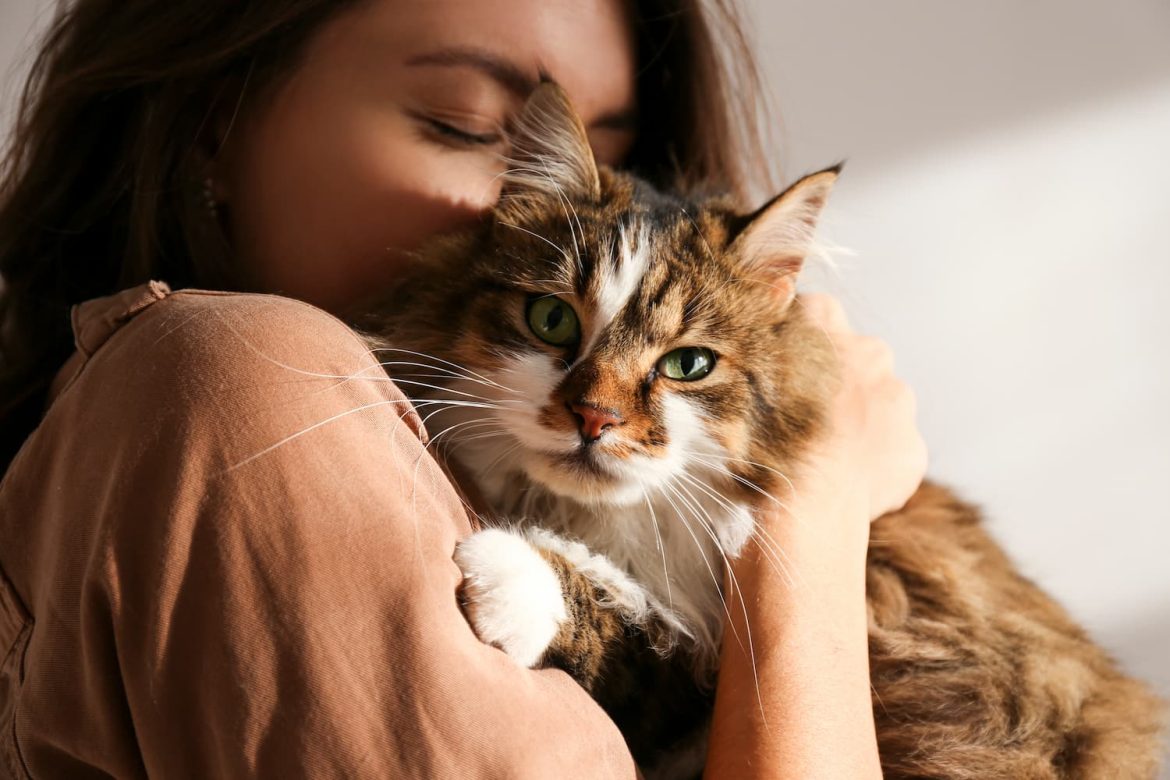Understanding cat body language is essential for building a strong bond with your feline companion and ensuring their well-being. Cats communicate primarily through their body postures, facial expressions, vocalisations, and tail movements. By observing and interpreting these signals, you can better understand a cat’s emotions, intentions, and overall state of mind.
Cat’s four main indicators are their posture, tail, ears, eyes and vocalisations. Cat body language can often change quickly and cats are known for being less tolerant than dogs to affection and physical attention so it’s important to watch their body language to avoid a swipe or nip. Understanding cat body language is also crucial to understanding their well-being and knowing when they’re sick, tired, hungry etc.
 What do tail position and movements tell us about cat body language?
What do tail position and movements tell us about cat body language?
Tail position:
- Upright and relaxed: A cat with an upright tail, held straight or with a slight curve at the tip, indicates contentment and a friendly disposition.
- Puffed-up: When a cat’s tail is puffed up like a bottlebrush, it signals fear, aggression, or an attempt to appear larger and more intimidating.
- Held low or tucked between legs: A low or tucked tail is a sign of fear or anxiety. It indicates that your cat is feeling threatened or uncomfortable.
That’s why it’s important for every cat lover to know what each wag, wiggle, and twitch of the tail means.
Ear position:
- Forward and relaxed: When a cat’s ears are upright and facing forward, it shows attentiveness and interest. It indicates that your cat is calm and engaged.
- Flattened or turned sideways: Flattened or sideways ears suggest fear, aggression, or discomfort. It is a clear warning sign that your cat is feeling threatened or irritated.
Eyes & eye movement:
- Dilated pupils: Large, dilated pupils indicate fear, excitement, or aggression. When a cat is in a highly aroused state, their pupils tend to expand.
- Slow blinking: When your cat gives you a slow blink, often referred to as a “cat kiss,” it is a sign of trust and affection. It signifies that your cat feels relaxed and comfortable in your presence.
- Staring with a fixed gaze: Prolonged, direct eye contact from a cat can be perceived as a challenge or a sign of aggression. It is advisable to avoid intense staring contests with your cat.
Body posture:
- Relaxed, loose body: A cat with a relaxed body posture, free of tension, indicates contentment, relaxation, and a sense of security.
- Arched back, raised fur: When a cat’s back is arched, and the fur along its spine stands on the end, it is a defensive posture. It suggests fear, aggression, or an attempt to appear larger to intimidate a perceived threat.
- Crouching with tucked paws: A crouching position with tucked paws indicates fear, or a sign that your cat is on high alert and ready to react.
Vocalisations:
- Purring: Purring is a common sign of contentment, relaxation, and happiness. Cats often purr when they are being petted or feel secure and comfortable.
- Meowing: Cats meow to communicate with humans. Each meow may have a different meaning, such as hunger, attention-seeking, or distress. Pay attention to the context and accompanying body language to understand the specific message.
- Hissing, growling, or yowling: Hissing, growling, or yowling are aggressive vocalizations that cats use when they feel threatened, frightened, or challenged. These sounds serve as warnings to back off and avoid confrontation
All of this body language will help indicate between cats’ four main moods: relaxed/happy, cautious, frightened, and threatened.
 Relaxed/happy is the ideal mood for a cat, this means they’re content in their environment and pleased with your company. This is the ideal state because it indicates that they’re healthy and happy.
Relaxed/happy is the ideal mood for a cat, this means they’re content in their environment and pleased with your company. This is the ideal state because it indicates that they’re healthy and happy.
Cats can be fussy so maintaining a good diet, a clean environment including litter trays, room to roam, a stable environment and company is the best way to keep them happy.
 Cautious can be a common mood for cats as their intrinsic behaviours include hunting so they’re often hyper-aware of sounds, movements and others in their environment. Cautious is not always negative, sometimes it is simply initiated by curiosity.
Cautious can be a common mood for cats as their intrinsic behaviours include hunting so they’re often hyper-aware of sounds, movements and others in their environment. Cautious is not always negative, sometimes it is simply initiated by curiosity.
If you notice that a cat is acting cautiously it is best to check if there is anything in the environment creating concern that could escalate and or comfort them.
 When a cat becomes frightened it is not always drastic, they can be quite sensitive so sometimes a loud sound or unfamiliar face is enough to frighten them. However, if they are constantly frightened you may need to evaluate their environment or consider other contributing factors such as anxiety or sensitivity due to pain.
When a cat becomes frightened it is not always drastic, they can be quite sensitive so sometimes a loud sound or unfamiliar face is enough to frighten them. However, if they are constantly frightened you may need to evaluate their environment or consider other contributing factors such as anxiety or sensitivity due to pain.
 When a cat is in a threatening mood this means they are extremely uncomfortable in their environment and afraid that whatever is nearby or confronting them is going to cause harm.
When a cat is in a threatening mood this means they are extremely uncomfortable in their environment and afraid that whatever is nearby or confronting them is going to cause harm.
Cats can lash out and bite or swat which can quickly become overwhelming and hard to avoid so if you see a cat in a threatened mood you should give them space and try to minimise stressful factors in their environment.
With all behaviour, it is important to remember that environment can have a huge impact and cause a shift in behaviour that will not be consistent with their normal personality. Cats are extremely sensitive to environmental changes and are known for trying to navigate back to their known home when moving, changing owners or similar scenarios.

